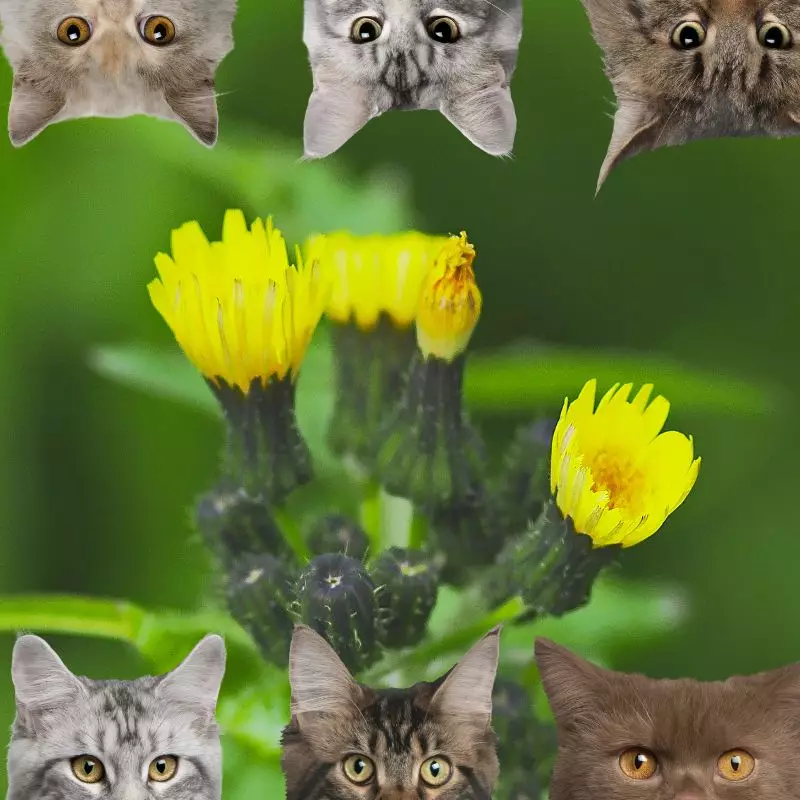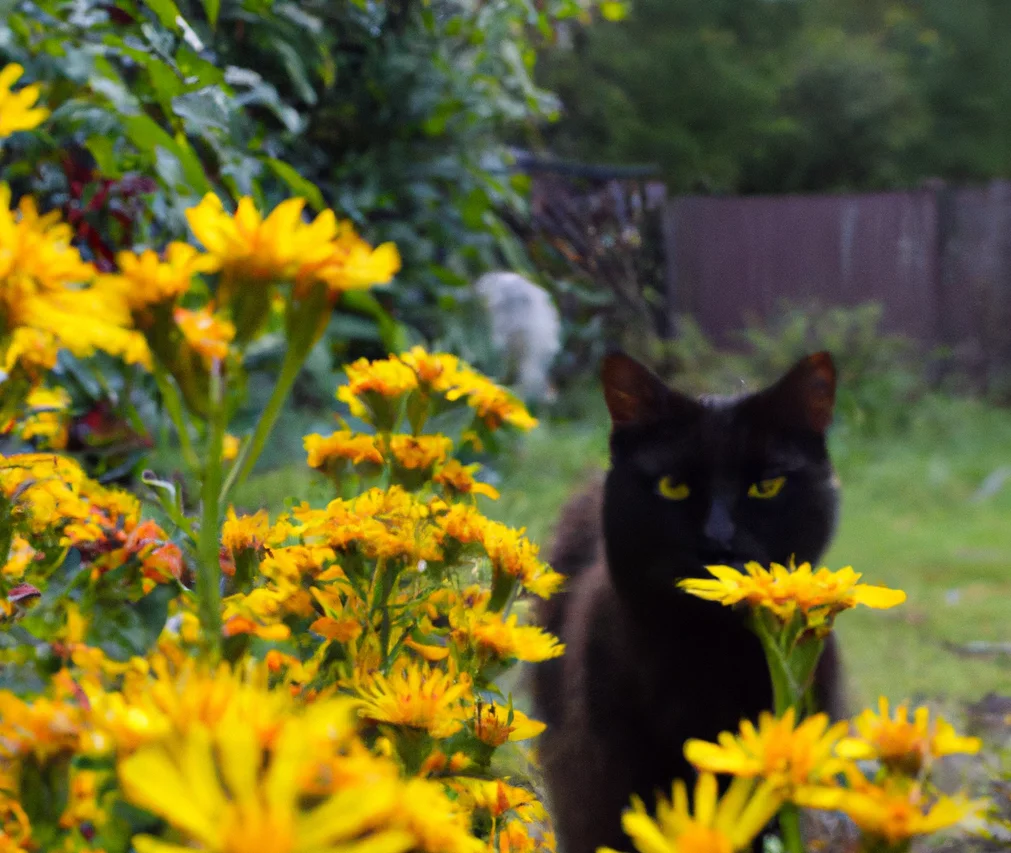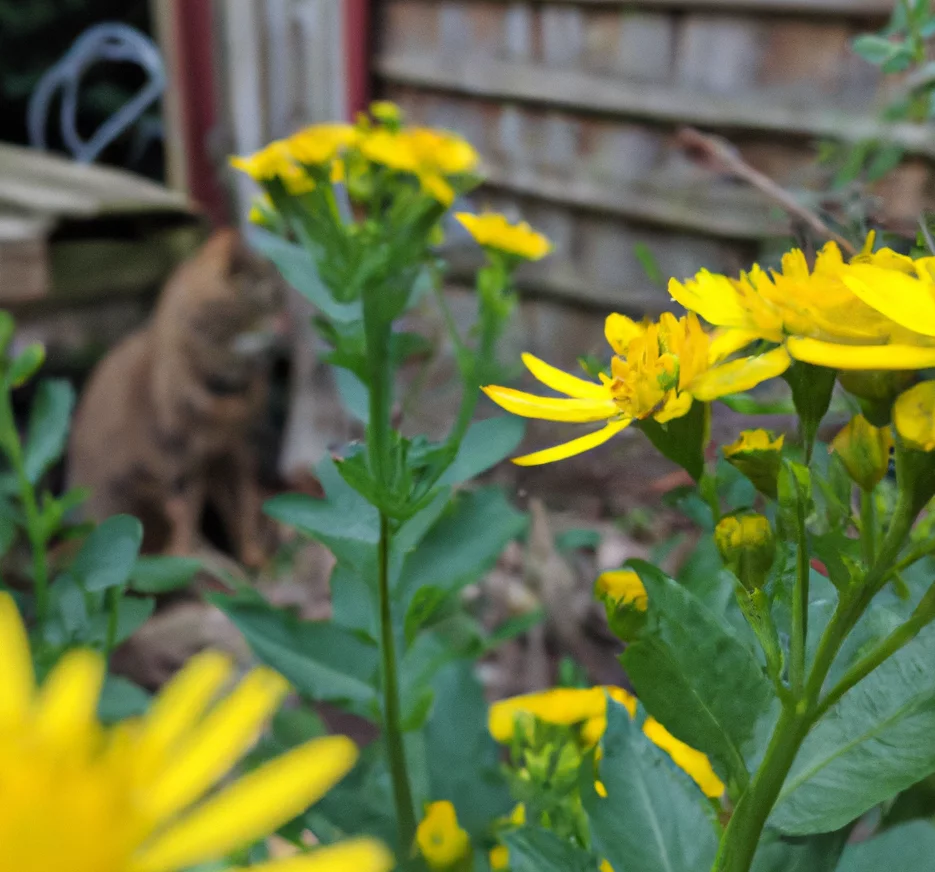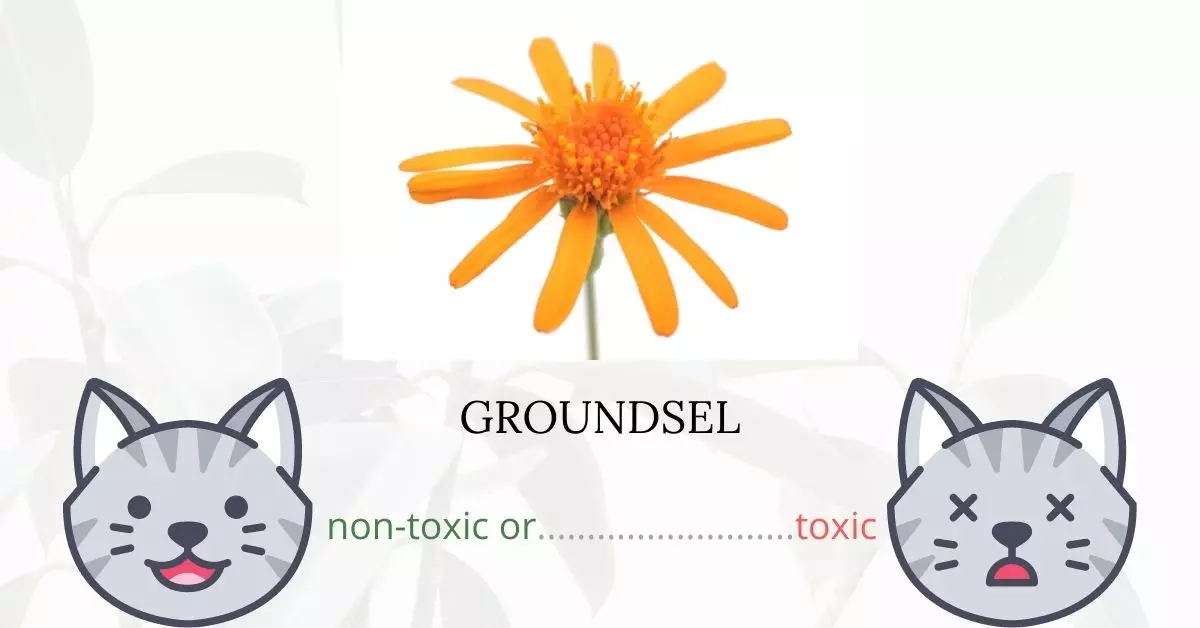Yes, Groundsel, commonly known as the senecio species, is toxic to cats. These flowering plants, which often flourish in disturbed areas, produce compounds known as pyrrolizidine alkaloids for defense against predators. While various plants produce these compounds, groundsel is among the few with a concentration high enough to pose a significant threat to animals, particularly cats. Consumption can lead to immediate symptoms such as frequent vomiting and diarrhea. Over time, as the cat’s body metabolizes these alkaloids, they can accumulate in the liver, resulting in severe and potentially fatal damage.
This article is the result of a collaboration with a team of experienced DVMs (doctors of veterinary medicine). Their insights and expertise ensure that we offer accurate and up-to-date information on the potential risks associated with plants like Groundsel and their effects on cats. Additionally, we have thoroughly referenced high-authority websites, including ASPCA and PetMD, to provide comprehensive insights on every plant discussed.
Clinical Signs of Groundsel or Senecio Poisoning in Cats

When a cat comes into contact with, smells, or ingests the Groundsel plant, it may display a variety of clinical signs, each indicative of the toxic effects of pyrrolizidine alkaloids found in the plant:
- Loss of appetite: This is often the first sign and results from the plant’s toxins affecting the cat’s gastrointestinal system, making them feel nauseated or unwell.
- Diarrhea and Vomiting: The toxins can irritate the cat’s stomach and intestines, leading to diarrhea and vomiting as the body tries to expel the harmful substances.
- Muddy mucous membranes: An indication of decreased circulation or potential internal bleeding caused by the toxins.
- Loss of coordination and Ataxia: The pyrrolizidine alkaloids can affect the cat’s nervous system, leading to disorientation and a lack of muscle control.
- Behavioral changes: As the toxins influence the brain and nervous system, cats might exhibit abnormal behaviors or seem more agitated or withdrawn than usual.
- Sunburn of hairless areas of the body: The toxins can make the skin more sensitive to sunlight, leading to sunburns on exposed areas.
- Jaundice: A yellowing of the skin and eyes, this indicates liver damage or dysfunction, as the toxins from the Groundsel plant can lead to a buildup in the liver.
- Weakness: General malaise and reduced energy levels can result from the body’s overall struggle to cope with the toxins.
- Liver damage: Prolonged exposure or ingestion of the plant can lead to a buildup of toxins in the liver, causing it to function improperly or even fail.
- Neurological issues: Beyond ataxia and behavioral changes, the cat might show signs of seizures, tremors, or other neurological disturbances due to the effect of toxins on the nervous system.
It’s crucial for cat owners to be vigilant and act promptly if they suspect their cat has come into contact with Groundsel or shows any of these signs.
First Aid and Treatment of Groundsel or Senecio Poisoning in Cats

The most common treatment for groundsel poisoning is to remove as much of the pyrrolizidine alkaloids as possible from the cat’s system. This means the vet may decide to use a stomach pump to remove any remaining plant fragments before delivering an activated charcoal dose to absorb any remaining poisons. He may also decide to commence hydration treatment for the cat. This requires utilizing an IV drip to directly inject fluids into the cat’s body, preventing dehydration and diluting the toxins present in the body at the same time. This will also cause urination, which will result in the expulsion of even more contaminants.
Recovery from Groundsel or Senecio Poisoning in Cats

Most cats will recover completely within a few weeks, but in some cases, continuous therapy and dietary adjustments will be required for the rest of their lives. Follow-up appointments with the veterinarian may be also required to check on your cat’s health condition. He will also suggest keeping the cat in the house for a while and providing it the most basic diet feasible. This will ensure that the cat’s digestive system receives plenty of rest and does not eat ingest any foreign substances while recovering.
Prevention of Groundsel or Senecio Poisoning in Cats
Most cats will recover entirely within a few weeks, but some will require ongoing treatment and dietary changes for the remainder of their lives. Follow-up sessions with your veterinarian may be necessary to watch your cat’s health. He will also suggest keeping the cat in the house for a while and providing it the most basic diet feasible. This will ensure that the digestive system of the cat has enough rest and does not eat or ingest any foreign items while it heals.
If you love plants but have cats at home, check out these lists:





